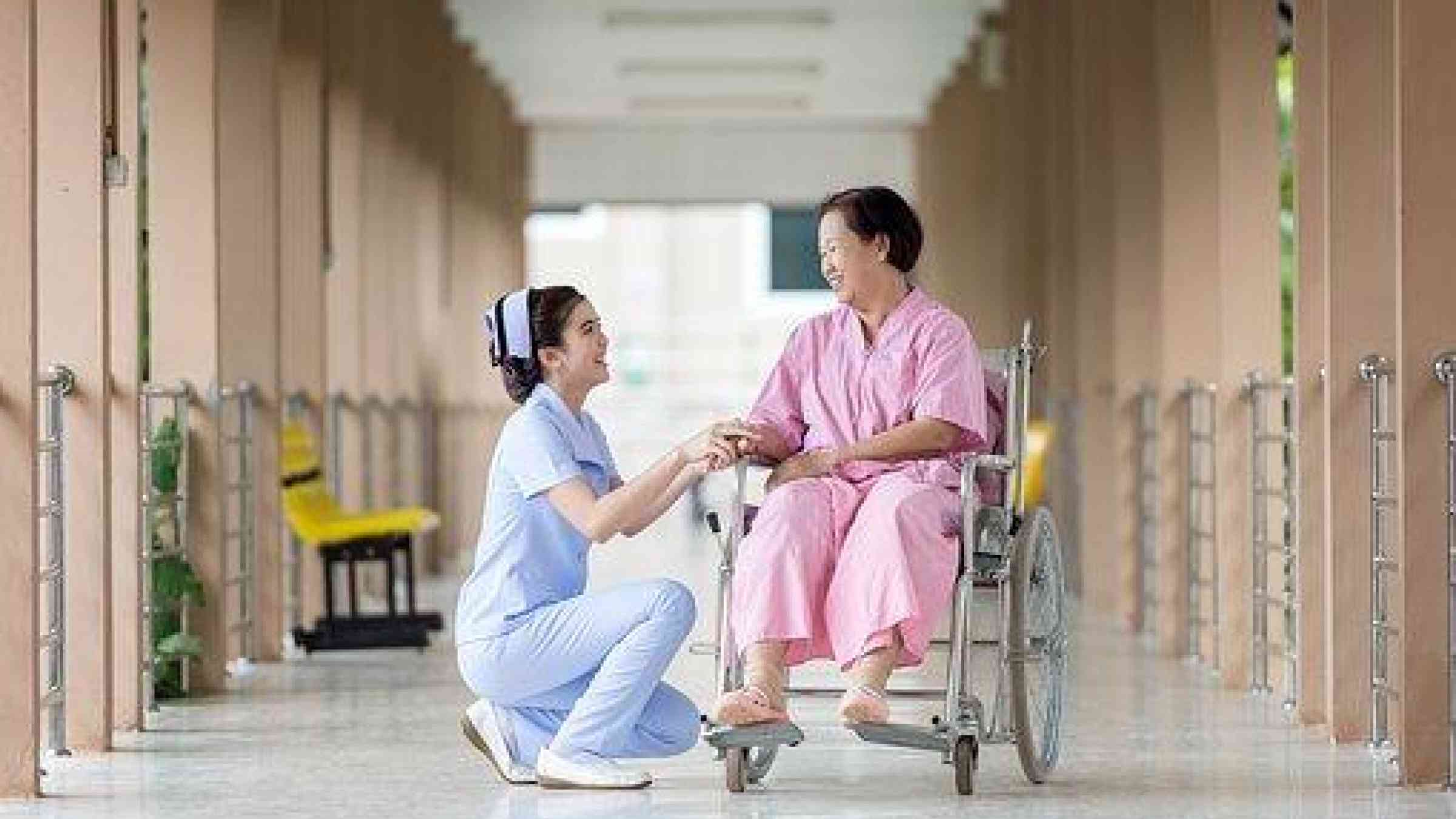Please help us improve PreventionWeb by taking this brief survey. Your input will allow us to better serve the needs of the DRR community.
5 ways to include people with disabilities when preparing for tsunami

By Margaret Arnold, Charlotte McClain-Nhlapo, Deepti Samant Raja, and Lorenzo Piccio
While disasters threaten the well-being of people from all walks of life, few are as disproportionately affected as the over one billion people around the world who live with disabilities. Following the 2011 Tohoku earthquake and tsunami in Japan, for example, the fatality rate for persons with disabilities was up to four times higher than that of the general population.
Persons with disabilities are especially vulnerable when disaster strikes not only due to aspects of their disabilities, but also because they are more likely, on average, to experience adverse socioeconomic outcomes than persons without disabilities, including higher poverty rates. Disasters and poorly planned disaster response and recovery efforts can exacerbate these disparities, leaving persons with disabilities struggling to cope even more both during and after the emergency.
In advance of the Global Disability Summit, and drawing on a recent report titled “Disability Inclusion in Disaster Risk Management” from the Global Facility for Disaster Reduction and the Recovery (GFDRR) and the World Bank, here are five actions that development institutions, governments, and other key stakeholders can take to ensure that persons with disabilities are not left behind in the aftermath of a disaster.
1. Ensure that persons with disabilities have a seat at the table.
Persons with disabilities and disabled persons’ organizations (DPOs) have invaluable knowledge, experience, and expertise about how to make disaster risk management activities responsive to their needs. It is vital to include them in the design, implementation, and monitoring of these activities. The Indonesian province of Central Java has set an example for how to help make this happen by creating a disability inclusion service unit within the local disaster management office.
2. Remove barriers to full participation of persons with disabilities.
It is not enough, however, for persons with disabilities to have a seat at the table. Far too often, they face physical, informational, communication and other barriers that prevent them from participating in full. Accordingly, development institutions, governments, and other key stakeholders must make every effort to break down these barriers. This includes ensuring that physical or virtual sites for meetings and consultations are barrier-free, providing accommodations such as sign language interpretation and Braille materials when needed, and providing information in accessible formats.
3. Increase awareness among governments on the needs of persons with disabilities.
Awareness about the vulnerabilities of persons with disabilities both during and after disaster remains limited among some governments. Regrettably, this means that they may not give priority to the well-being of persons with disabilities during disaster response and recovery. It is thus critical to build government awareness about the needs of persons with disabilities. In Cambodia, the Philippines, and Thailand, the University of Sydney’s Disability and Disasters project is doing just that by developing training modules which allow government officials, among other users, to get up to speed on the risks that disasters pose to persons with disabilities.
4. Collect data that is inclusive of persons with disabilities.
In far too many parts of the world, data and statistics disaggregated by disability is simply not available. This can make it challenging to design and implement disaster risk management activities, which are responsive to the needs of persons with disabilities. Countering data gaps requires support for data collection activities, such as censuses and household surveys. In the Philippines, the Arbeiter-Samariter-Bund (ASB) Community Resilience Program is working with disabled persons’ organizations to gather disability data – an inclusive approach to data collection, which could be emulated elsewhere.
5. “Build back better” by improving accessibility for persons with disabilities.
Across the disaster risk management community, the movement to “build back better” continues to gain traction. But as GFDRR’s “Building Back Better” report recently pointed out, there is a need to ensure that reconstructed infrastructure is not only more resistant to future hazards, but also more inclusive of vulnerable populations, including persons with disabilities, the elderly, and pregnant women. Disaster recovery efforts should strive to improve accessibility for persons with disabilities, as has been the case in post-earthquake Haiti, which enacted a law to ensure that all buildings, both new and rebuilt, are accessible to persons with disabilities.
Explore further
Please note: Content is displayed as last posted by a PreventionWeb community member or editor. The views expressed therein are not necessarily those of UNDRR, PreventionWeb, or its sponsors. See our terms of use
Is this page useful?
Yes No Report an issue on this pageThank you. If you have 2 minutes, we would benefit from additional feedback (link opens in a new window).